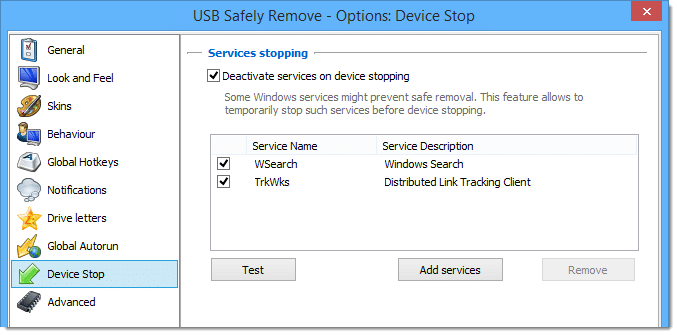


ProEject is portable and very light on system resources.īesides the standard device removal, ProEject can automatically close open applications and windows that are being run from the drive. It’s also possible through settings to eject, show the drive properties, or open it in Explorer on double click. This shows the available drives on the system and you can right click on the device you want to eject and eject it. ProEject is a little bit like USB Disk Ejector because it opens a small window in the bottom right corner of your desktop. Firewire devices are also supported by USB Disk Ejector. Select the type of eject, enter the hotkey combination into the box, select the drive letter/name and click Add.

In Hotkeys, you can create a keyboard shortcut to automatically eject a device. In the Options, you will find some useful settings for controlling how the program sees card readers and whether to hide a reader with no media devices attached. There’s also command line arguments for ejecting the device, /Removethis will eject the drive the program is running on while /Removeletter n removes a specific drive using its letter. If any applications launched from the drive are open, they can be asked or forced to close, change this in Options > Ejection. When you click the tray icon a small window opens in the bottom right corner of the desktop with a list of devices that can be selected for removal.ĭouble click on the device, press the Enter key, or use the right click tray menu to eject it. It’s also open source and a portable standalone executable that you can place anywhere, including on the removable drive you want to eject. USB Disk Ejector is probably the closest available free alternative to the shareware USB Safely Remove utility. All tools were tested in Windows 7 and 10. In this article, we’ll look at 5 freeware programs that can help control your portable USB drives and other removable devices, especially while trying to remove or eject. There are some shareware applications around like USB Safely Remove or Zentimo (by the same developer) that enhance how USB removable devices are handled. It can also be tricky identifying devices if you have several plugged in at once. The Windows built in Safely Remove Hardware function sometimes doesn’t work the way it should and in some situations the icon can even disappear altogether. While this has improved over the years and it’s better in newer operating systems like Windows 10, handling USB devices is still not as good or efficient as it should be. One problem Windows has had throughout the time removable devices have been around is it’s not the best at handling them when they are attached and removed. USB removable devices such as flash drives and portable hard drives are these days a part of everyday life.


 0 kommentar(er)
0 kommentar(er)
